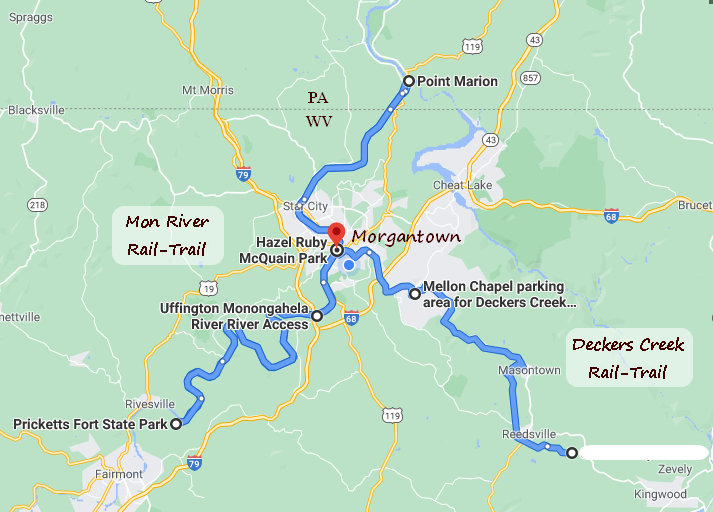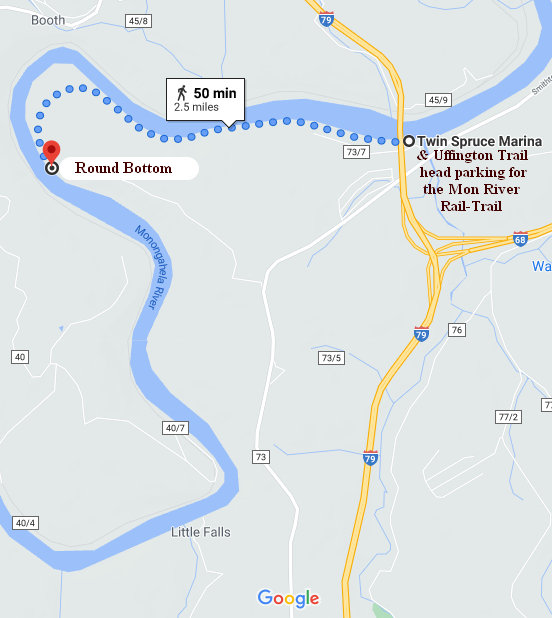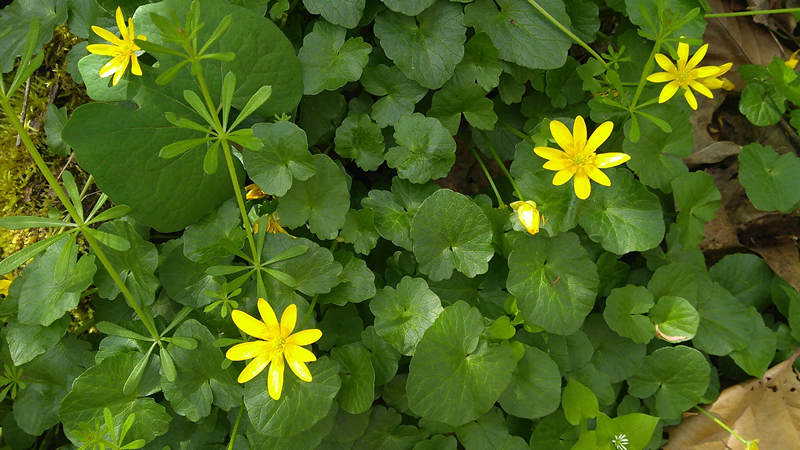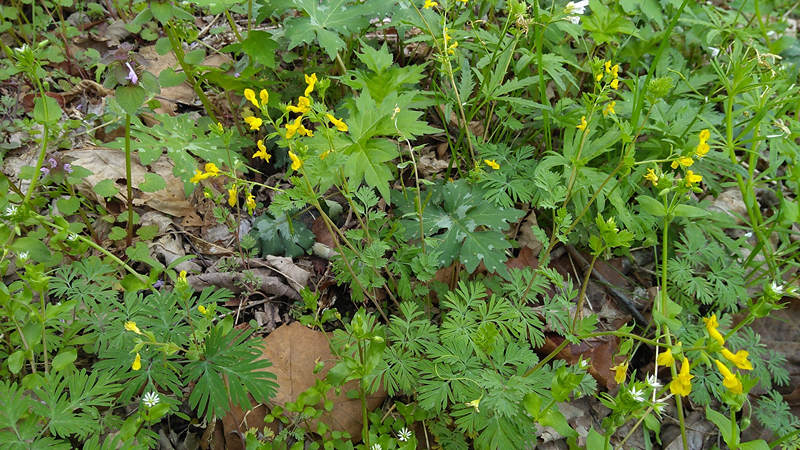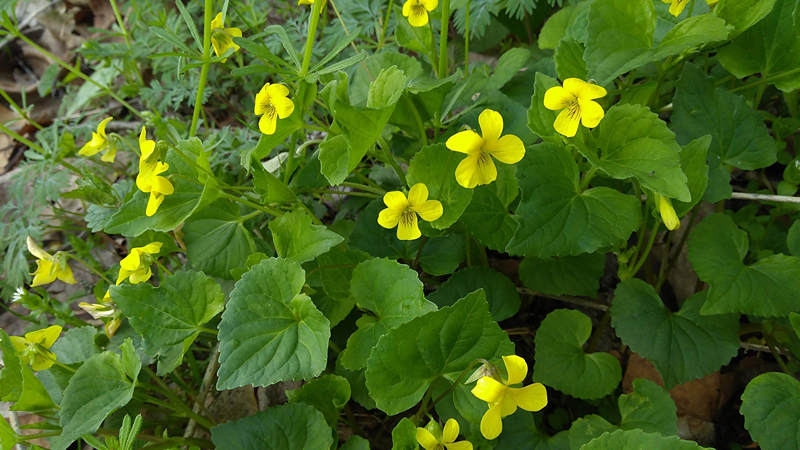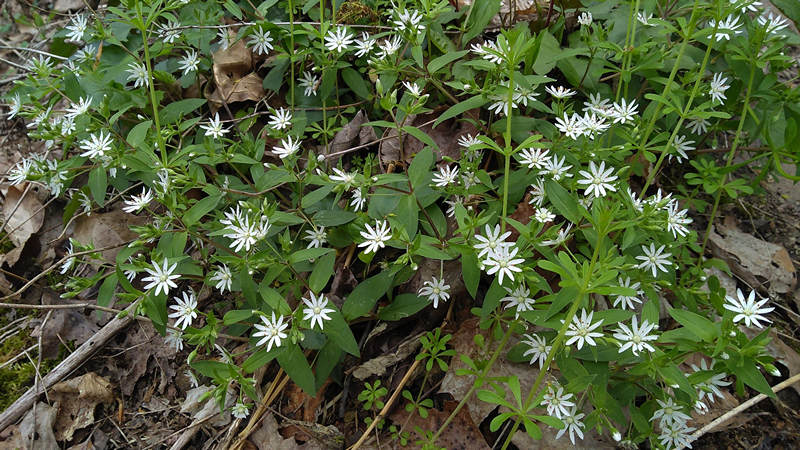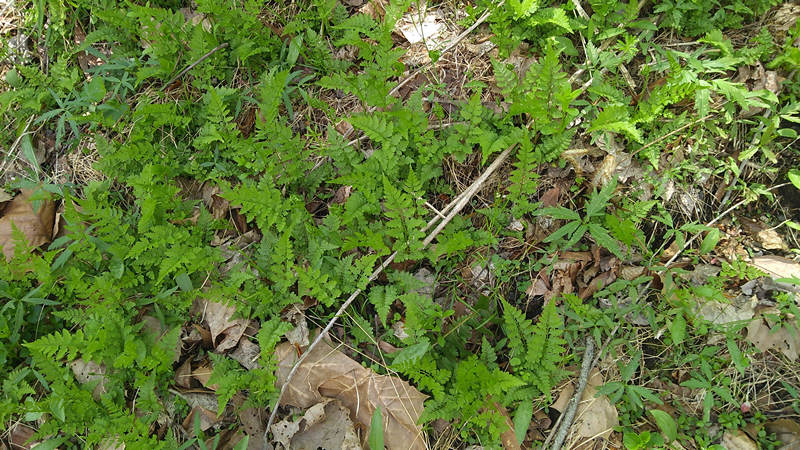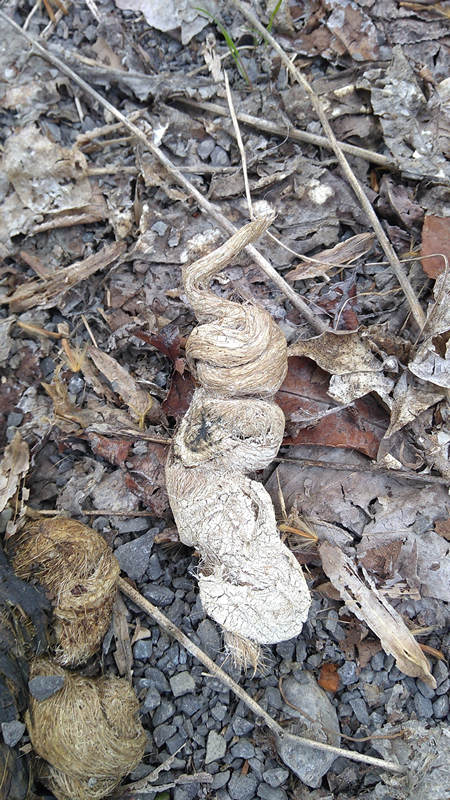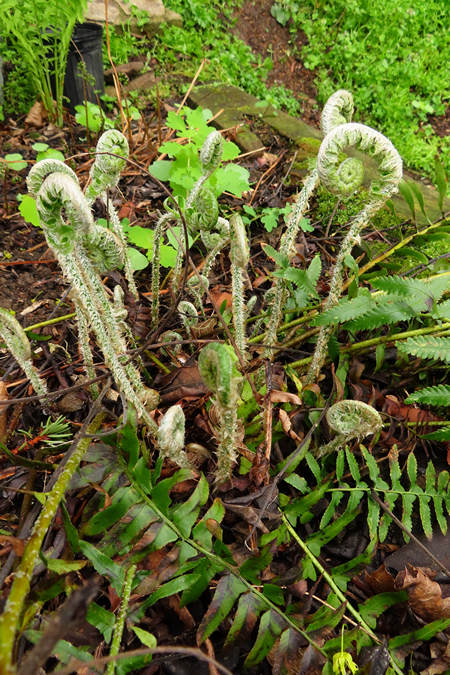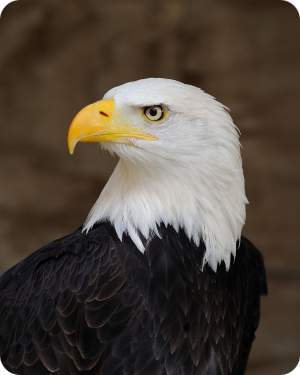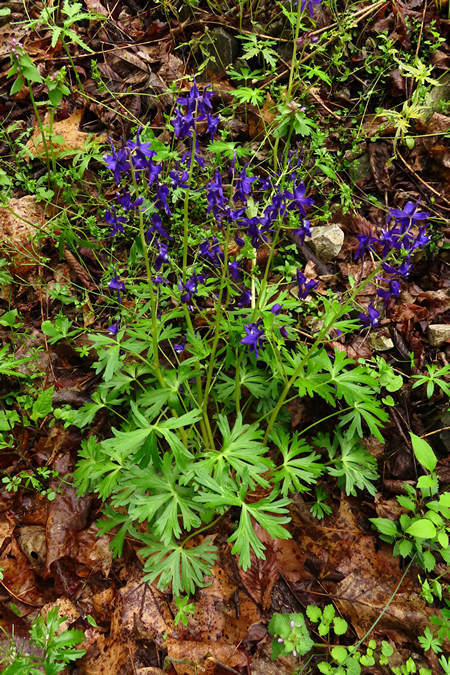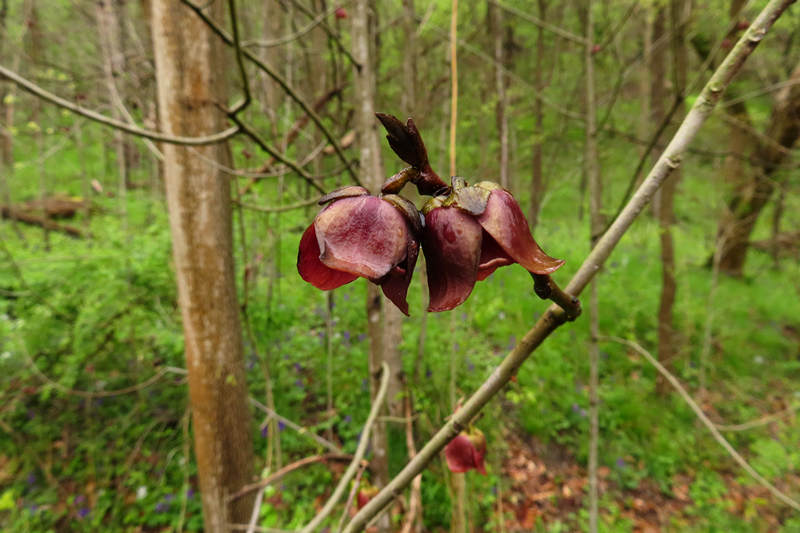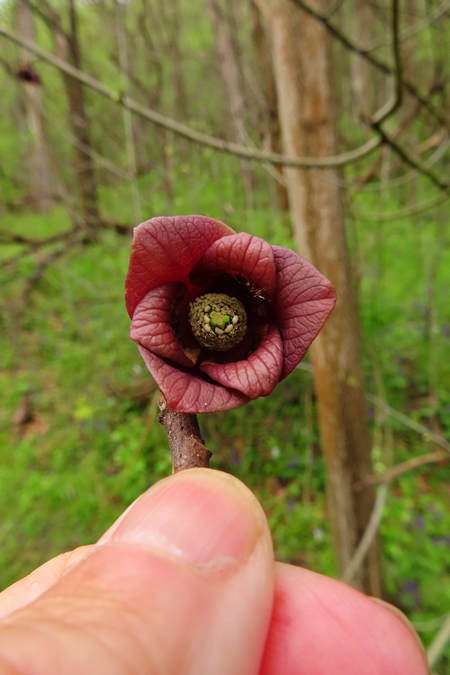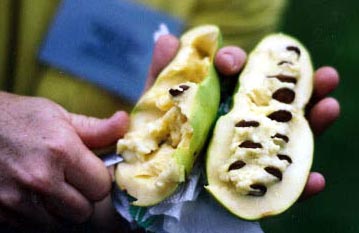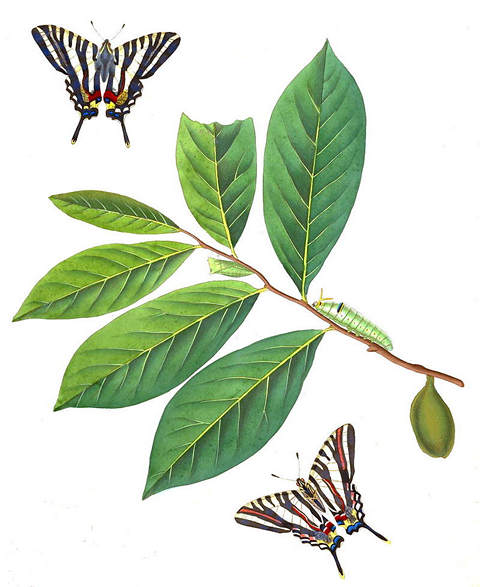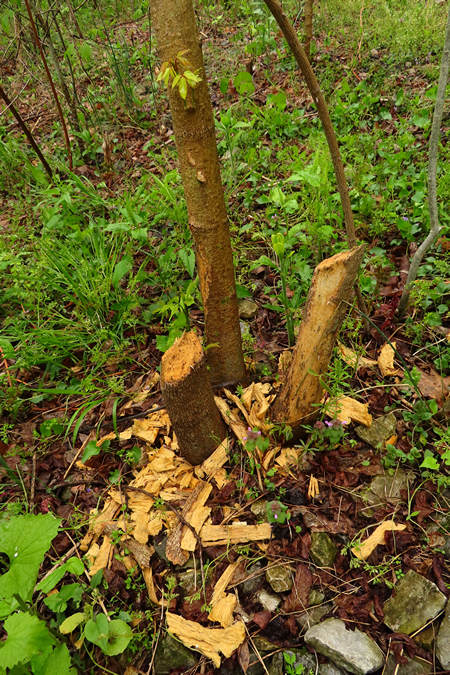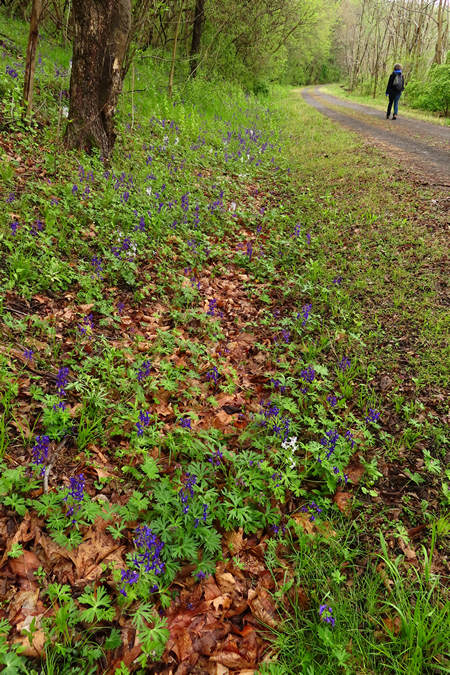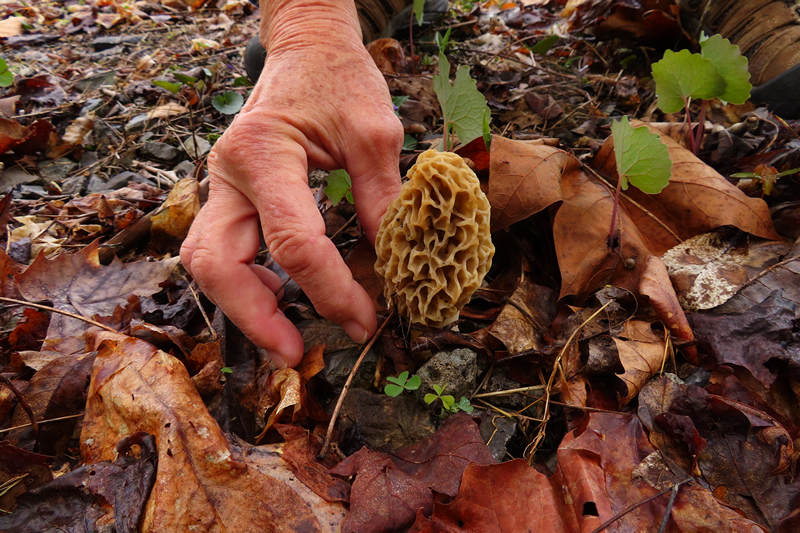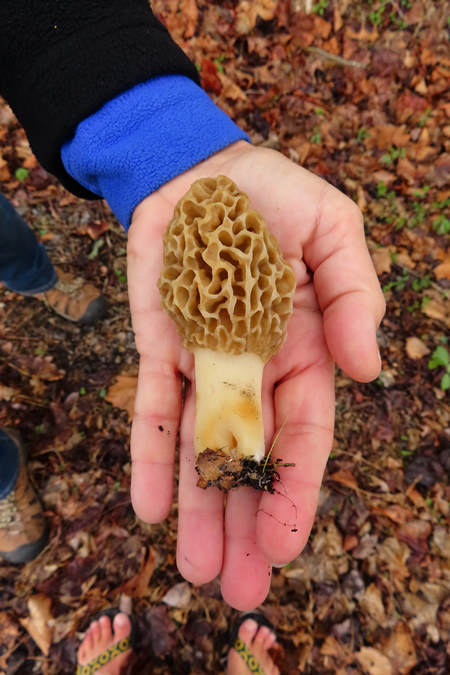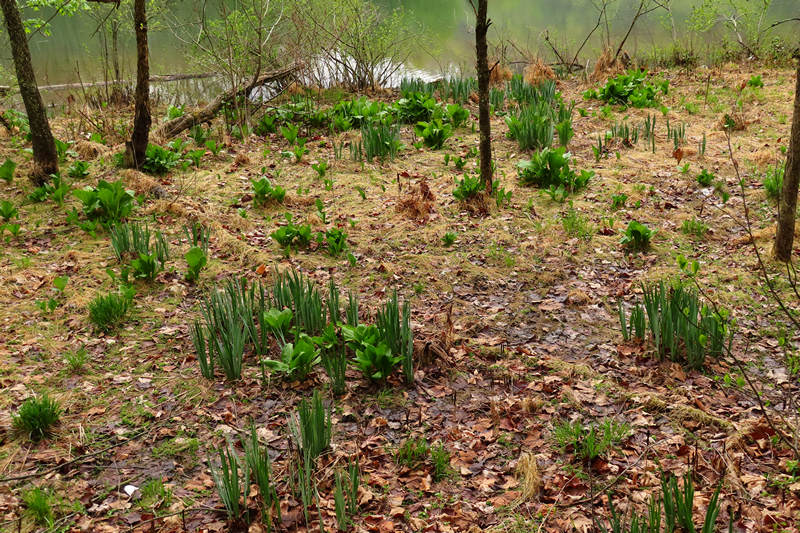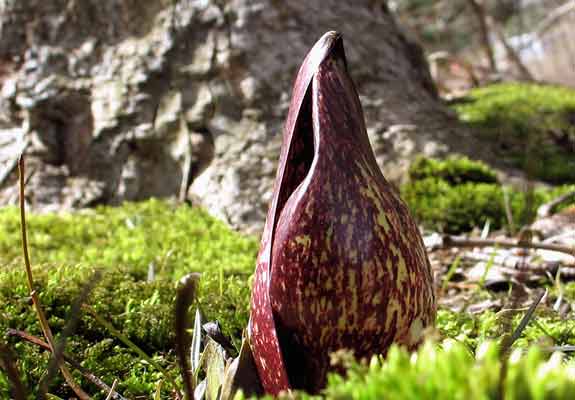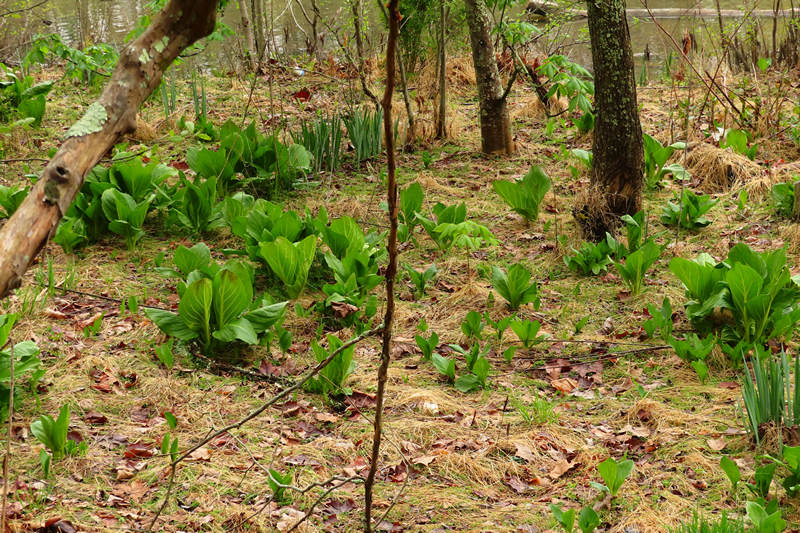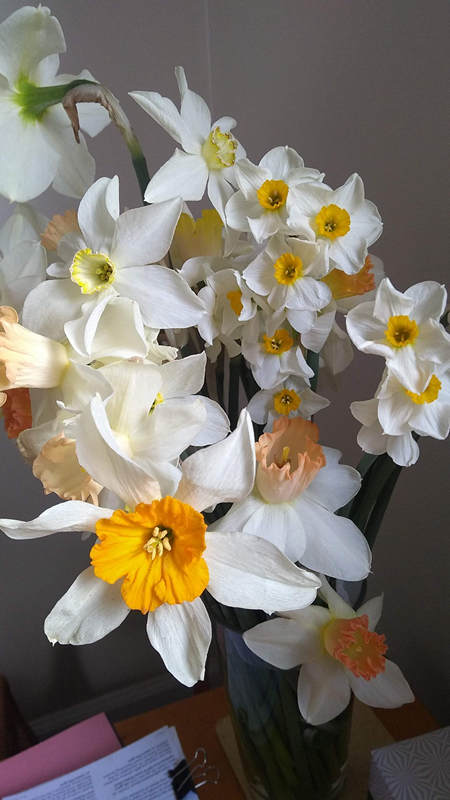Mike Breiding's Epic Road Trips: April 2021
Wrapping up our 10th Winter in Tucson...
and a return to Almost Heaven
Spring Time Walks on the Mon River Rail-Trail
April 2021
Our COVID winter seemed to speed by like no other and before it seemed possible March had rolled around and then the calendar was sneaking up on April.
April. Time for me to hit the road and head back to West-by-god-Virginia and the Spring Time that awaited me.
Spring Time in West Virginia: cool, cloudy and damp. Ahhhh... And of course green, green, green - or at least soon to be. And wild flowers. Oh, yes - many weeks of wild flowers. I am ready to get home!
Betsy? Not so much.
Betsy was not quite ready to give up the Tucson warmth and sunshine and so she decided to stay an additional two weeks before flying back home. And staying on had the added bonus of having some time to herself.
And so, I left and Betsy stayed.
Thursday, April the 1st
As usual I decided on a route which would limit my time on Interstates, and my drive on the back roads of eastern New Mexico and up to and across northern Oklahoma kept me away from the major metros, congestion and heavy truck traffic.
Once on the far side of Oklahoma I dipped south just a bit and snuck in the back way into northwestern Arkansas and then on to Missouri where I cut through that odd little hanger on where the Mississippi and Ohio rivers meet and before you know it you are in Kentucky where Spring Time in the karst is mile after mile of redbud and dogwood in bloom.
And before you know it I am seeing the "Welcome to West Virginia" sign. I am not far from home now. And glad of it.
Monday, April the 5th
When I rolled into Cabin №18 I took a quick look around the house and yard. Unlike the winter of 2019/20 no trees had fallen and punched a hole through the kitchen roof and no electrical service been torn from the house (twice!).
I let myself in and immediately opened up windows and doors. It was a warm day out - much warmer than the inside of the house and the basement felt like a deep freeze.
While in transit I had called the water company about restarting our service and was told that would not happen until Tuesday, the day after I arrived. No big deal. Just in case I had stashed a few jugs of water before I left for drinking and coffee making.
So I set about the task of unloading the van, all the time thinking how glad I was it was not pouring down the rain.
I had a lot to unload. This always seems to happen. In addition to the usual stuff, I had two 55 gallon rail barrels courtesy of TE neighbor Deb, my two wheel bike, my trike, my San Francisco trunk and a whole lot of odds and ends stuck in the back bay area where the rear seats used to go: all the canned goods, booze, dry goods and other stuff which we could use here in WV.
I was in the thick of unloading when along came a utility truck rolling down Huntington Ave. It looks like I will not be waiting until tomorrow for a hot bath after all.
As soon as the service was reconnected I set about the task of draining the RV anti-freeze from the lines and then giving them a thorough flushing. And then I fired up the hot water tank all the while thinking about that cold beer and the hot bath I would soon be luxuriating in.
I don't even remember what I had for dinner that first night but the next day I was at the grocery store getting provisioned for nearly three weeks of cooking for myself. It had been a while since I had to do that!
First on the menu: chili. By accident I made a double batch and it filled in the blanks for 6 meals. My buddy Tom helped me with the surplus.
After the chili pot was empty and the last serving was in the freezer I started having giant salads every night which were fortified with grated Asiago and Parmesan cheese and chicken chunks picked from a roaster with just a dash of salt and pepper and a drizzle of olive oil. Tasty.
And then Tom came to the rescue by inviting me over for Happy Hour and his DeLuxe Chicken Bake for dinner. It was quite unlike anything I had eaten before.
Wanna hear more about my fabulous meals? I didn't think so.
By now it is getting to the time when Betsy is sorting things out on the Tucson end.
Our single wide trail is small, but still needs attention when closing it up for 6 months.
So Betsy set about organizing and cleaning and moving and stowing all the outdoor furniture and making sure the gal who would be shutting off the utilities knew exactly what to do and how to do it.
And then at 3:30 a.m. on the morning of April 15th our neighbor Bob picked Betsy up and dropped her at the Tucson airport in time to catch her 5:18 a.m. flight to Ft Wayne where she was met by her sister Charlotte and brother-in-law Joe. After a four day visit it was in the Buick and on to Morgantown.
When Betsy arrived on the afternoon of April 20th it was a warm and balmy day. A perfect "welcome home" for her. We had Happy Hour on the slab, enjoyed the warm breeze, green tinged trees and the singing of the cardinals.
For dinner we had one of our favorite meals: potato and chicken curry. I had made a big pot of it which fed us for three nights.
The next day we both got a surprise. The temperature it did drop and the snow it did fall and soon all was snow covered - including the flowers on our lilac.
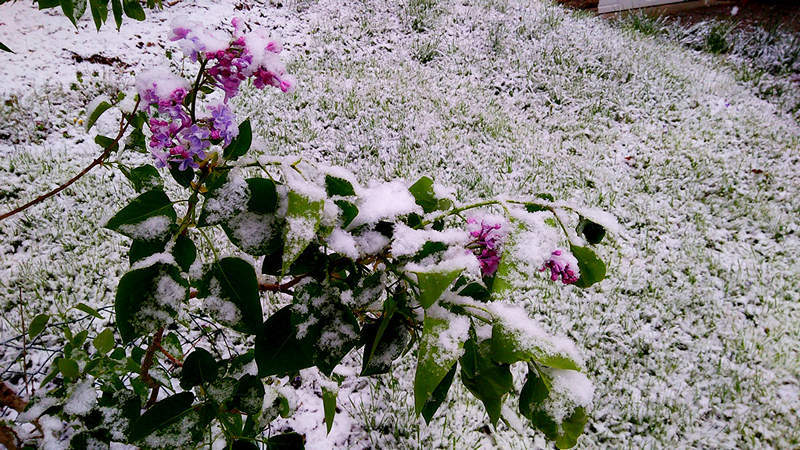
It was 37° when we awoke and it had dropped to 34° by 9am.
My Japanese maples had picked up so much snow they were bent nearly to the breaking point. I hastily found a stick and started knocking the snow off.
That night there was to be a predicted low of 28 and we got it. I was dreading what the next day might bring and wondered what damage the freezing temps would do. But unlike the spring of 2020 we came though unscathed. Whew! A close call. And I had cut the lilac flowers the same day and brought them inside where I washed the snow off of them at the kitchen sink. They stayed nice for a week and it was treat to have them inside.
But before Betsy arrived back into my loving arms I had to think about the next three weeks and make sure I got out on a regular basis for some hiking/walking/biking. Otherwise how would I maintain my manly physique which even The Arnold would be jealous of?
We are fortunate to live in a part of town where one can easily enjoy a 4-5 mile street and park walk right out the front door. There is also nearby Tygart Lake and Valley Falls State Parks, Coopers Rock State Forest and the WVU Core Arboretum. And of course the nearly 50 miles of wonderful, mostly forested rail-trail is just a 5 minute drive to the nearest access point. Lots of options.
Just above I mentioned "the about 50 miles of wonderful, mostly forested rail-trail". Here is a map of the Mon Rivers - Deckers Creek rail-trail system in Monongalia, Marion and Preston counties West Virginia. And let's not forget that little section of rail-trail which connects us to Point Marion, PA.
One of the sections Betsy and I enjoyed walking last Spring is from Twin Spruce Marina at Uffington Station to Round Bottom on the Mon River Rail-Trail. Waaaay back in 2006 Betsy and I paddled this section as well.
This is a 4 mile flat out and back stroll. It's beautiful anytime of the year but particularly in the spring when there is a succession of many species of wild flowers to enjoy along with nice views of small waterfalls where one might see or hear the Louisiana waterthrush.
Today I would be having a solitary walk on the rail-trail while Betsy was hiking in the Tucson Mountains and enjoying some porch sittin' at the Rancho Relaxo.
Click on the photos below for a larger image.
Sunday: 18 April 2021
Although one will see mostly native wild flowers along the sides of the rail-trail, there are non natives as well including the Lesser celandine shown above.
Native to central Europe, north Africa and the Caucasus it can be a noxious weed in some areas.
Here we see the yellow flowers of Pale corydalis and the leaves of Virginia waterleaf and Dutchman's breeches.
So far, yellow seems to be the color of the day. These are the lovely Downy yellow violets. The most common violet which is known by just about everyone is the Common blue violet and can often be found in yards and other mowed areas.
The little flowers of the Star chickweed put on quite a show in the spring with thousands of tiny white flowers covering the slopes.
There is much more to see along the rail-trail besides wildflowers. This dense colony of Fragile fern is just a few feet off the trail. Although not rare, one must keep a sharp eye out as its relatively small size can make it hard to spot once the surrounding plants put on growth.
Hmmm... what have we here? Odd looking thing is it not? If you click on the image to see the larger photo you will notice it is comprised almost entirely of what looks like hairs. And indeed that is what they are. This is coyote scat. And although I have heard and seen coyotes in West Virginia I have never before seen the scat.
However during our six months in Tucson we can scarcely step out the front door without seeing coyote scat. And that is no exaggeration!
Sunday: 25 April 2021
Betsy arrived back in Morgantown on April 20th and we started right in on our nearly daily walks, one of which was another one of our favorite sections of the Mon River Rail-Trail.
This 5 mile walk from Little Falls to the Hildebrand Lock and Dam has some interesting plants. And animals - as we were about to find out.
My oh my, what a difference from the Sonoran Desert where we spend 6 months in the winter. From cactus and mesquite to dogwoods and ferns. A wonderful change of scenery which we look forward to - both coming and going.
There are many fine Yellow buckeyes growing along the rail-trail. The combination of the large, bright green palmately compound leaves and the interesting flower heads makes it a real standout.
Click the photo for an even closer look.
The yellow buckeye is a rugged beauty with its thick bark, interesting yellow spring blooms and striking orange fall color. In parks and yards, it serves as an attractive and dense shade tree suitable as a pleasing focal point or a visual screen.
But where does the word "buckeye" come from? This tree actually gets its name from the whitish scar found on each brown seed. It is said to give the seed the appearance of a deer's eye.
Source: © 2021 Arbor Day Foundation
Springtime in the Appalachians is a Frond Fondlers paradise. One fern you are almost certain to see on any walk is the ubiquitous Christmas fern. Here you can see the unfurling fiddleheads and the prostrate fronds from the previous year.
The numerous white scales make the newly emerging fronds easy to spot.
Although considered edible, the fiddlehead scales of the Christmas fern would require a lot of effort to remove to make them palatable.
Amazing...
Another common fern, especially in wet areas, is the Bead fern.
Like the Christmas fern the Bead fern has dimorphic fronds - one frond type which is sterile and one which is fertile and spore bearing. In the case of the Bead fern the fertile fronds are very narrow and covered with what look like little beads.
Source: WikiPedia
These unusual fronds turn woody at the end of the season and can often be seen sticking up out of the snow making them very easy to spot.
It was at about this point in our hike Betsy and I heard what we though was a Louisiana waterthrush. We stopped to get a better listen and I started scanning the trees to see if I could spot it. This is what we saw.
Source: WikiPedia
This beauty was perched high up in a large Sycamore tree, it stayed for a bit then flew across the trail directly in front of us, made a turn and headed down river. What a treat!
These once endangered birds have made an amazing comeback from the days of near extermination and now are even known to nest in old industrial sites.
Eagles and their offspring continue to creep into nesting sites with heightened levels of human disturbance, Murphy said. “Birds are growing up and looking for new nest sites and the old threats are not considered threats, such as industrial noise and traffic.”
There are some notable bald eagle nest sites in non-traditional places, including 150 yards from the clubhouse of a golf course in south-central Pennsylvania and along a busy six-lane highway and cloverleaf intersection in the middle of the state, Murphy said.
Source: © 2021 Trib Total Media
We saw several nice stands of Dwarf larkspur in the adjacent woods and along the trail.
This was a nice surprise. We came across a nice stand of Paw Paw trees which were naked of leaves but had prominent flowers.
These odd shaped flowers are leathery and persist for weeks thus making the leafless Paw Paw trees easy to recognize.
The pawpaw is a patch-forming (clonal) understory tree found in well-drained, deep, fertile bottomland and hilly upland habitat, with large, simple leaves. Pawpaw fruits are the largest edible fruit indigenous to the United States (not counting gourds, which are typically considered vegetables rather than fruit for culinary purposes, although in botany they are classified as fruit).
Pawpaw fruits have a sweet, custard-like flavor somewhat similar to banana, mango, and pineapple, and are commonly eaten raw, but are also used to make ice cream and baked desserts. The bark, leaves and fruit have been documented as containing the neurotoxin annonacin, which could cause neurodegeneration.
Larvae of the zebra swallowtail (Protographium marcellus), a butterfly, feed exclusively on young leaves of A. triloba and various other pawpaw (Asimina) species, but never occur in great numbers on the plants. Chemicals in the pawpaw leaves confer protection from predation throughout the butterflies' lives, as trace amounts of acetogenins remain present, making them unpalatable to birds and other predators.
Source: WikiPedia

The Paw Paw is not the only interesting tree on this section of the Mon River Rail-Trail. In this same area and close to the Hildebrand Lock and Dam there is a stand of Kentucky coffee trees.
As you can see from the range maps above, the Kentucky coffee tree barely has a foot hold in West Virginia and is primarily a tree of the mid-west.
The Paw Paw tree has broad coverage in West Virginia but is primarily a southern and mid-western tree. It's a bonus to have them both on the trail and in close proximity to each other.
Native Americans and early American settlers, especially those in the Kentucky territory, roasted and ground the seeds to brew a coffee-like beverage (albeit no caffeine), hence the common name. Native Americans roasted the seeds for food. Seeds are very toxic prior to roasting, and should never be eaten fresh off the tree. Trees are late to leaf out in spring and are one of the first to drop leaves in the fall.
Source: Missouri Botanical Garden
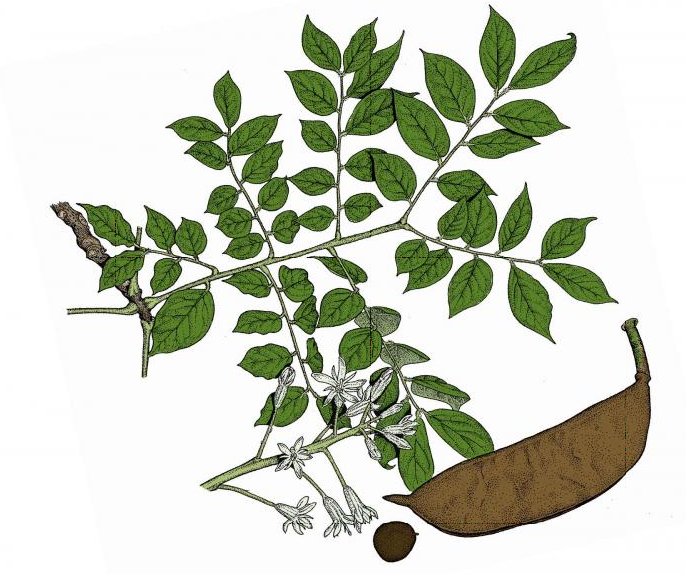
Leaves, seeds and flowers of the Kentucky coffee tree.
Source: Missouri Department of Conservation (mo.gov)
We are seeing lots of goodies today. The plant with the reddish flower is Sessile trillium. The plant with the heart shaped leaves is Wild ginger.
Where there's water there are often beavers. Betsy and I regularly see beaver sign when walking or biking the Mon River Rail-Trail.
Here we are at 2.5 miles - our turn around point at the Hildebrand Lock and Dam. Not a pretty sight is it? This kind of floating garbage mat and other debris can be seen behind every dam on the Monongahela River. And not just on the Mon. And for about 1/2 mile up stream the shoreline is covered with more trash.
Hildebrand Lock and Dam is a navigational lock and gated dam on the Monongahela River at Hilderbrand, West Virginia. (Hildebrand is a misspelling of Hilderbrand.) It is part of a series of dams that canalizes the Monongahela to a depth of at least 9 feet (2.7 m) for its entire length from Fairmont, West Virginia to Pittsburgh, Pennsylvania. It is maintained by the U.S. Army Corps of Engineers, Pittsburgh District.
Hildebrand has a single lock chamber located on the left-descending river bank. The dam's upper pool extends 7.4 miles (11.9 km) upstream to Opekiska Lock and Dam, with its 6.0-mile (9.7 km) downstream pool being formed by Morgantown Lock and Dam.
Source: WikiPedia
We had barely started back when Betsy said: "I think I heard a coyote!" I had not heard it but then there was another call. I was skeptical at first because the call sounded much higher pitched and more strained than what we are used to hearing in Tucson. But then it called again, and again and then there was no mistaking it.
So now we have found coyote scat and heard the call - both on the good old Mon River Rail-Trail!
One more shot of a beautiful drift of Dwarf larkspur.
And then Betsy got really excited!!
What a beautiful morel. Betsy used to hunt these all the time, both by her self and with Charlie Baer who was a neighbor for many years when we lived on Hornbeck Road.
What are Morels?
Morels are one of the most desired wild mushrooms in the world. They are not farmed like most grocery store mushrooms, Cremini, Portobello, Oyster, etc. but gathered in the wild. The part that we eat is the fruiting body of the underground organism called mycelium that has a complex symbiotic relationship with trees. Every spring mushroom enthusiasts, foraging chefs, and an ever growing group of commercial harvesters hunt these little forest treasures.The Morchella genus has been the subject of fascination and debate for centuries. Mycologists (mushroom scientists) cannot agree on how many subspecies of Morchella there are and the nomenclature is constantly under revision. However, doesn’t “a rose by any other name would smell as sweet?” Everyone can agree that morels are delicious and nutritious.
Source: © 2021 Untamed Feast Inc.
Mmmm - yummy! Once you have found one there is always the hope for more. As we continued our walk Betsy scoured the trail for more but found only one more. She then decided to come back the next day to do some serious huntin'. But alas - she found just two more. And here is how they ended up.
A tasty Happy Hour treat!
Just before we arrived back at the trail head I noticed this nice bunch of skunk cabbage on a flat area along the river.
Symplocarpus foetidus, commonly known as skunk cabbage or eastern skunk cabbage (also swamp cabbage, clumpfoot cabbage, or meadow cabbage, foetid pothos or polecat weed), is a low growing plant that grows in wetlands and moist hill slopes of eastern North America. Bruised leaves present a fragrance reminiscent of skunk.
Breaking or tearing a leaf produces a pungent but harmless odor, the source of the plant's common name; it is also foul smelling when it blooms. The plant is not poisonous to the touch. The foul odor attracts its pollinators: scavenging flies, stoneflies, and bees. The odor in the leaves may also serve to discourage large animals from disturbing or damaging this plant, which grows in soft wetland soils.
Eastern skunk cabbage is notable for its ability to generate temperatures of up to 15–35 °C (27–63 °F) above air temperature by cyanide resistant cellular respiration in order to melt its way through frozen ground, placing it among a small group of thermogenic plants. Even though it flowers while there is still snow and ice on the ground, it is successfully pollinated by early insects that also emerge at this time.
Source: WikiPedia
It is growing with Yellow flag iris, an invasive ornamental perennial which can choke out native vegetation.
Here is another shot of Skunk cabbage which I took on May the 15th, 2020, the day of our 38th wedding anniversary. You can see more photos by clicking here.
And what would spring be without daffodils? This lovely bouquet was given to me by Becky and Tom before Betsy arrived back home. But I made sure she enjoyed them via the Internet.
We are ready to hike! These are my new chacos which I will keep in WV. No dust and rocks for these - just a bit of mud now and then.
See you next time...
Mike and Betsy
